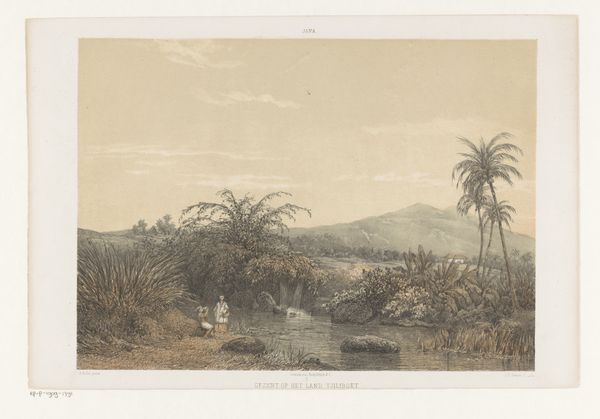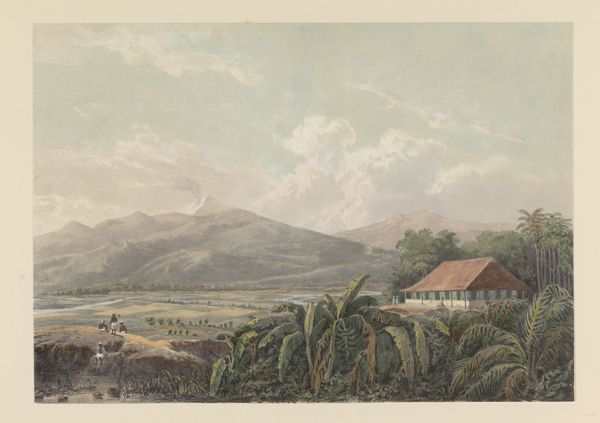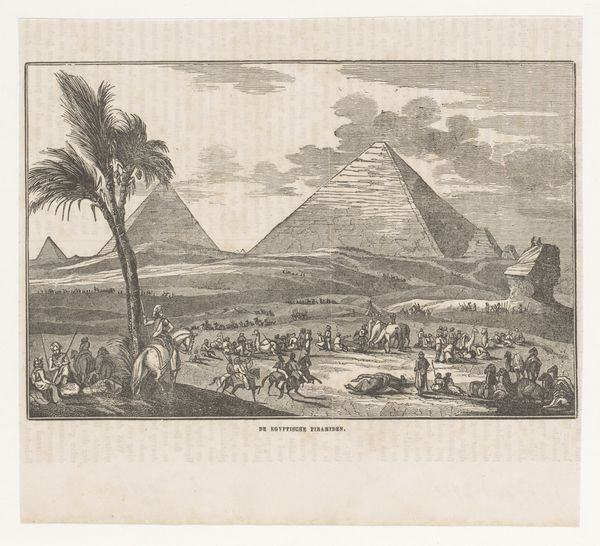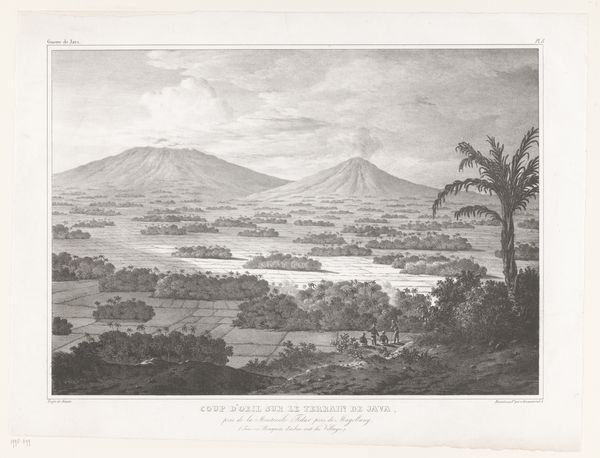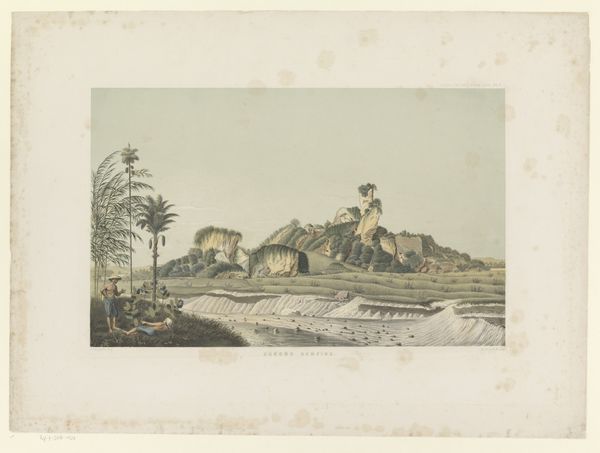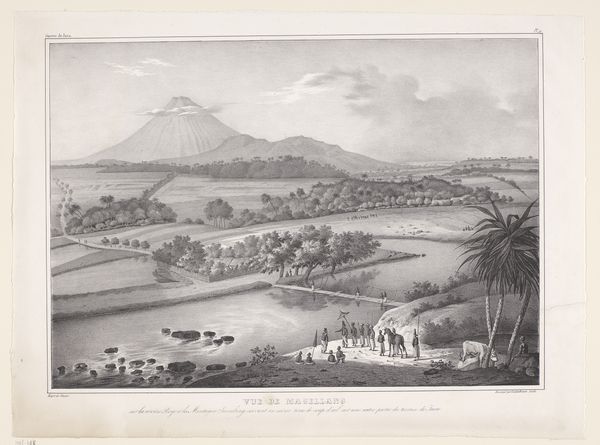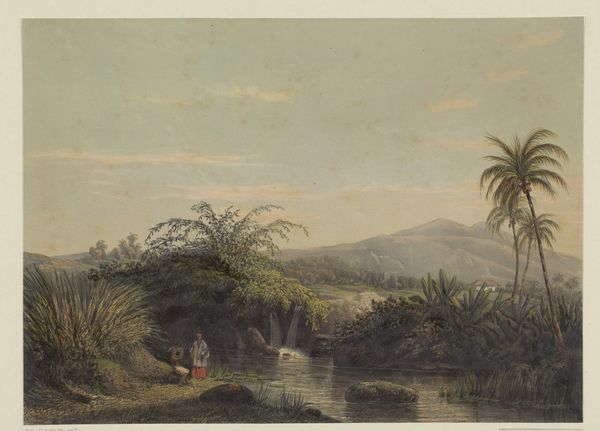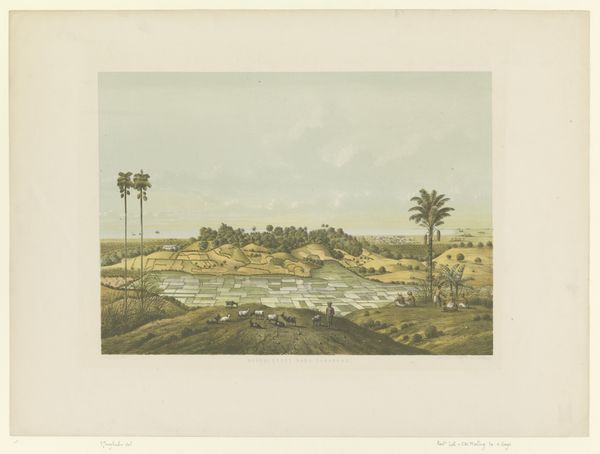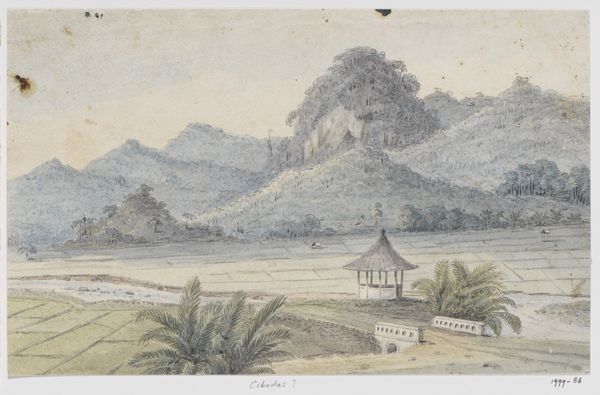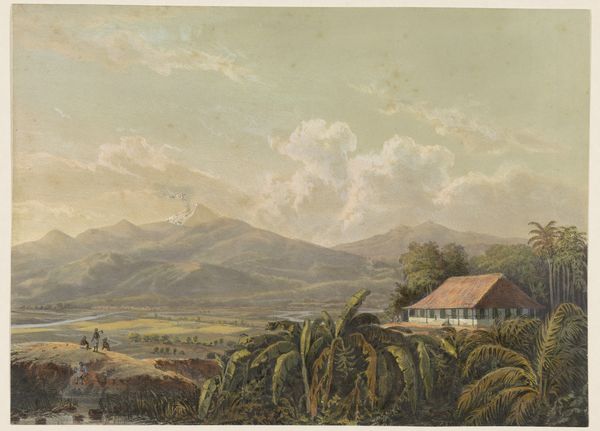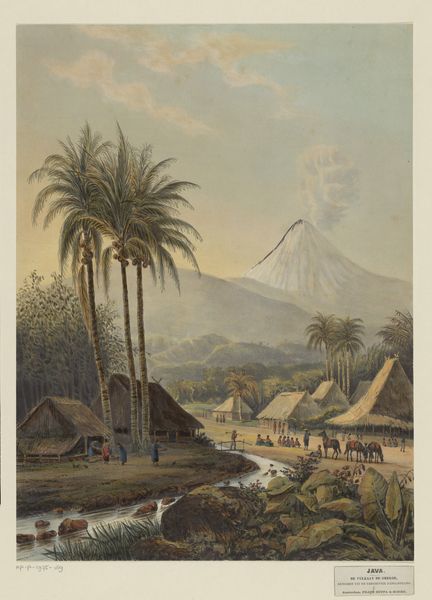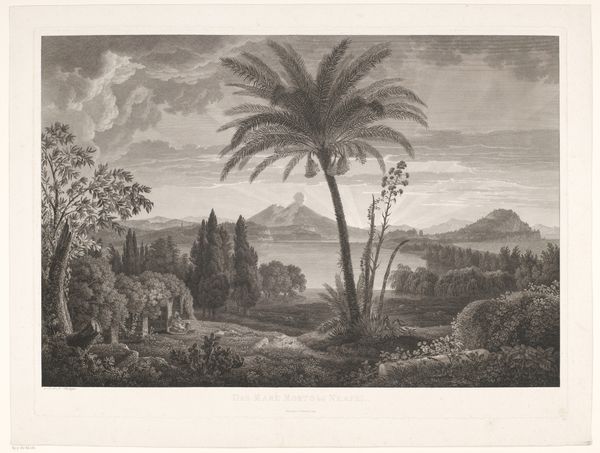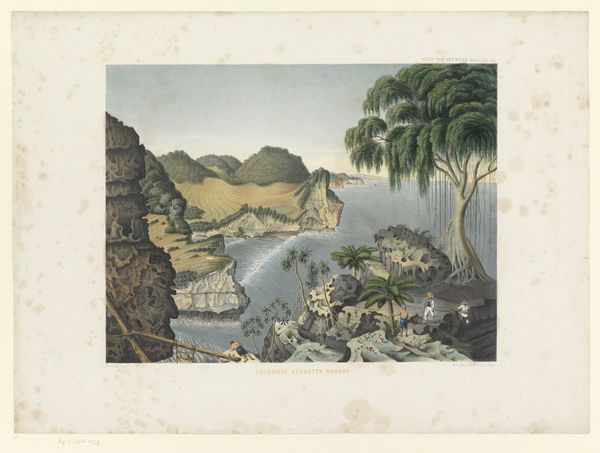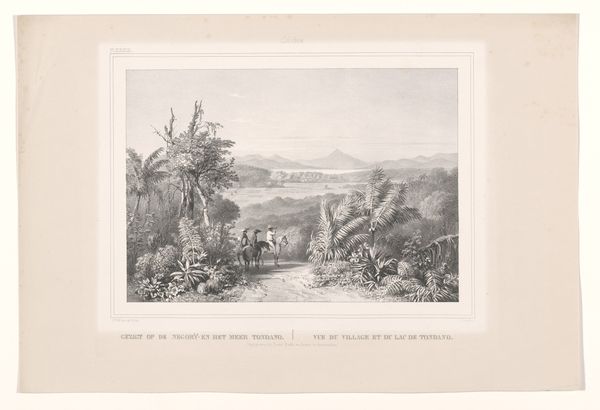
print, plein-air, watercolor
# print
#
plein-air
#
landscape
#
watercolor
#
coloured pencil
#
orientalism
#
watercolor
Dimensions: height 448 mm, width 572 mm
Copyright: Rijks Museum: Open Domain
Curator: Carl Wilhelm Mieling's "Vulkaan Sumbing te Java," created in 1854, captures a vista of Java. It's currently held at the Rijksmuseum. Editor: It has an extraordinary sense of stillness, doesn't it? That pale, conical mountain in the background is rather austere and looms over the verdant, meticulously rendered rice paddies in the foreground. Curator: Yes, and the statues arranged in the foreground seem to hold a narrative weight. There's a tangible relationship between the divine figures represented and the landscape they preside over. It speaks to the interconnectedness of the earthly and spiritual realms in Javanese cosmology. Editor: Absolutely. It's tempting to dismiss this as purely picturesque Orientalism, but there’s an unusual commitment to specificity of place here. You can almost feel the humidity clinging to the paper. And look closely at the way Mieling uses watercolour—layer upon layer, with an almost topographic sensibility. Curator: His use of colour creates a visual hierarchy, guiding our gaze from the cool, muted tones of the mountain to the warmer greens and browns of the cultivated land. Notice, too, how he balances the natural elements with the cultural ones. Those meticulously rendered statues feel very intentionally placed within this landscape. Editor: The statuary adds depth to the composition; and gives a human scale and historical resonance to this vast natural setting. Were these sculptures created near this vantage point? Curator: Quite possibly. What's striking is how the image encapsulates both the sublime grandeur of nature and the patient labour required to cultivate this land. The statues suggest devotion. They seem to be an integral component of this balance, watching over it. Editor: The artwork’s materiality interests me – the availability of certain pigments in the mid-19th century, the use of watercolour paper for “plein-air” work. Also the consumption: who would have commissioned or purchased a view like this? Curator: Possibly a colonial administrator or merchant seeking a memento of their time in Java or maybe as visual documents for scientific or exploratory use, to create cultural knowledge for far-away European audience. Editor: Interesting perspectives, really allows to examine at the artistic method but also historical factors that lead to the making of this piece of art. Curator: It gives a valuable understanding. Thanks.
Comments
No comments
Be the first to comment and join the conversation on the ultimate creative platform.
